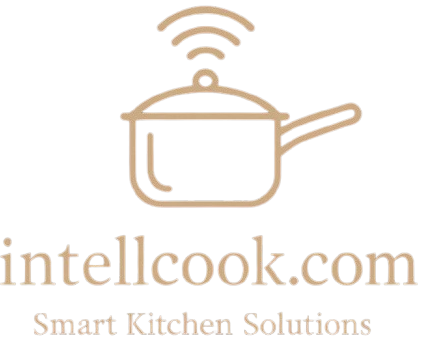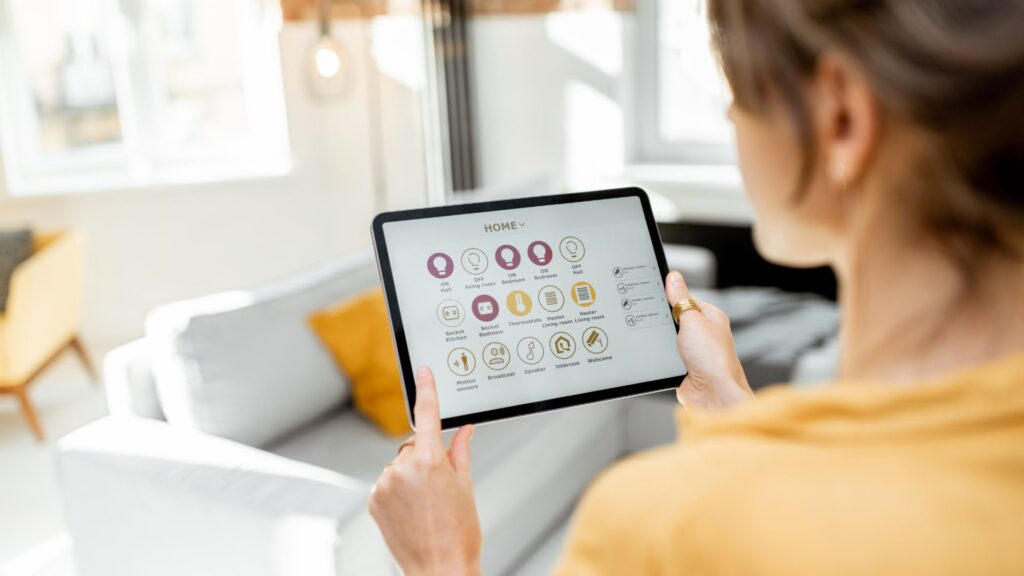The smart home revolution has swept across neighborhoods faster than anyone predicted. You walk into a friend’s house and suddenly lights adjust themselves. The thermoat knows when you’re coming home. Coffee starts brewing before your alarm even rings. Magic? Not quite. These are just a few home automation ideas for beginners that have become surprisingly accessible.
Many people feel intimidated when they first consider upgrading their homes with smart technology. The technical jargon sounds complicated. The installation process seems daunting. The price tags appear steep. However, getting started is far simpler than you might imagine. This guide will walk you through ten practical home automation ideas for beginners that won’t drain your bank account or require an engineering degree. Each idea builds upon the last to help you create a connected home at your own pace.
Why Start with Home Automation?
Your daily routine deserves to be easier. Smart home technology delivers comfort that traditional homes simply cannot match. Picture arriving home on a scorching summer afternoon to a perfectly cooled house. Imagine never worrying whether you locked the front door after leaving for vacation. These scenarios represent real benefits that automation brings to everyday life.
Energy savings add another compelling reason to embrace smart technology. Devices that monitor and adjust power consumption can slash your monthly utility bills significantly. Security improvements give you constant awareness of what happens around your property. Peace of mind becomes standard rather than luxury.
Starting small makes perfect sense for newcomers. You don’t need to automate everything at once. A smart home starter guide approach lets you learn gradually while spreading costs over time. Each device you add teaches you something new about how connected systems work together. This foundation prepares you for more advanced upgrades down the road.
10 Home Automation Ideas for Beginners
1. Smart Plugs for Everyday Appliances
Smart plugs and lighting represent the absolute easiest entry point into home automation. These clever adapters fit between your wall outlet and any standard appliance. Setup takes less than five minutes through a smartphone app. Suddenly your ordinary lamp becomes controllable from anywhere in the world.
Coffee makers become programmable without buying expensive new machines. Fans turn off automatically when you leave for work. Holiday lights switch on at sunset without manual intervention. The versatility of smart plugs makes them perfect starter devices that cost less than dinner for two.
2. Smart Lighting Control
Lighting transforms the entire feel of your home. Voice controlled smart devices let you adjust brightness and color without leaving your couch. Some people replace their existing bulbs with smart versions. Others prefer installing smart switches that control multiple fixtures at once.
Schedules ensure lights turn on before you arrive home after dark. Motion sensors prevent stumbling through hallways at night. Vacation modes make your house appear occupied when you travel. The options expand far beyond simple on-off functionality.
3. Smart Thermostat for Beginners
A smart thermostat for beginners delivers the fastest return on investment among all automation options. These devices learn your temperature preferences over time. They detect when nobody is home and adjust settings accordingly. Some models provide detailed energy reports that highlight wasteful patterns.
Installation usually requires basic DIY skills or a quick professional visit. Most thermostats work with existing heating and cooling systems without major modifications. The average household saves 10-23% on heating and cooling costs within the first year. Those savings continue accumulating month after month.
4. Voice Assistants
Amazon Alexa, Google Assistant, and Apple Siri serve as command centers for your smart home ecosystem. These assistants respond to spoken requests instantly. You can ask about weather forecasts while getting dressed. Recipe instructions play hands-free while you cook. Music fills rooms without touching a single button.
Voice controlled smart devices become exponentially more useful when connected to a central assistant. One command can trigger multiple actions simultaneously. “Goodnight” might lock doors, turn off lights, and lower the thermostat all at once.
5. Home Security Automation
Home security automation addresses one of the most important aspects of any residence. Smart locks eliminate fumbling for keys when your hands are full of groceries. Video doorbells show who visits even when you’re at work. Motion-activated cameras capture unexpected activity around your property.
Notifications alert you instantly to unusual events. Two-way audio lets you speak with delivery drivers from anywhere. Integration with other smart devices means lights can flash when someone approaches your door. Security has never been this comprehensive or convenient.
6. DIY Smart Cameras
Indoor and outdoor cameras provide constant monitoring without monthly subscription fees. Many affordable home automation ideas center around budget-friendly camera systems. Modern options offer crystal-clear video quality even at night. Cloud storage keeps footage accessible for weeks or months.
Phone apps let you check in on pets during work hours. Elderly parents living alone gain an extra layer of safety. Package theft becomes easier to prevent and prosecute. The mere presence of visible cameras deters potential problems before they start.
7. Automated Cleaning Devices
Robotic vacuums and mops have evolved dramatically over recent years. Today’s models navigate complex floor plans without getting stuck. They return automatically to charging stations when batteries run low. Scheduled cleaning happens while you’re away so you always come home to fresh floors.
Pet hair, dust, and everyday debris disappear without lifting a finger. Some advanced models empty their own dustbins. Others scrub hard floors with rotating pads. The time savings add up quickly for busy families.
8. Smart Kitchen Appliances
Modern kitchens benefit tremendously from connected technology. Smart ovens preheat remotely so they’re ready when you walk through the door. Refrigerators track expiration dates and suggest recipes based on available ingredients. Coffee makers prepare your perfect cup before your morning alarm sounds.
Slow cookers adjust temperatures automatically to prevent overcooking. Dishwashers run during off-peak electricity hours to reduce costs. These appliances integrate seamlessly into your daily routine while adding convenience at every meal.
9. Energy Monitoring Tools
Understanding power consumption helps you make smarter financial decisions. Smart plugs often include energy monitoring features that track usage in real time. You’ll discover which appliances consume the most electricity. Phantom power drains become visible and fixable.
Detailed reports break down costs by device and time period. Some systems provide recommendations for reducing waste. Knowledge empowers you to lower bills without sacrificing comfort. The environmental impact of reduced consumption benefits everyone.
10. DIY Smart Home Projects
DIY smart home projects offer creative solutions for specific needs. Arduino boards and Raspberry Pi computers enable custom automation at minimal cost. Online tutorials guide you through building sensors, controllers, and monitoring systems. The learning experience proves just as valuable as the finished product.
Home automation on a budget becomes entirely achievable with DIY approaches. You can start with simple projects like automatic plant watering systems. More ambitious builders create whole-house monitoring dashboards. The flexibility of custom solutions means your home works exactly how you want.
Tips for Setting Up a Beginner Smart Home
Affordable home automation ideas should drive your initial purchases. Resist the temptation to buy everything at once. Start with one or two devices that address your biggest pain points. Master those systems before expanding further.
Compatibility matters more than you might expect. Check whether devices work with your preferred voice assistant before buying. Some products require specific hubs or bridges to function properly. Read reviews from actual users rather than relying solely on marketing claims.
Keep your network secure as you add more connected devices. Change default passwords immediately after installation. Update firmware regularly to patch security vulnerabilities. Create a separate guest network for smart home devices to isolate them from personal computers.
Another Good Read: 15 Smart Kitchen Design Ideas for Small Spaces
Buying Guide for Beginner Smart Home Devices
- The beginner smart home setup process should prioritize quality over quantity. Look for devices from established manufacturers with good customer support. App usability determines how often you’ll actually use features. Clunky interfaces lead to abandoned technology gathering dust.
- Budget considerations matter, but extremely cheap devices often disappoint. Mid-range options typically offer the best balance of features and reliability. Easy smart home devices focus on simple setup and intuitive operation rather than excessive features.
- Long-term scalability ensures your investments remain useful as your system grows. Will these devices work with products you might add later? Can they integrate with multiple platforms? Future-proofing saves money and frustration down the road. Best starter picks include basic smart plugs, affordable bulbs, and a reliable voice assistant to tie everything together.
Wrapping Up…
These ten home automation ideas for beginners provide a solid foundation for your smart home journey. You don’t need to implement everything immediately. Choose one or two projects that excite you most. Experience the convenience firsthand before expanding further.
Home automation ideas for beginners work best when approached gradually and thoughtfully. Start small with devices that solve real problems in your daily life. Learn how each system operates before adding complexity. Your confidence will grow alongside your collection of smart devices.
The comfort and convenience of a connected home await you. Technology has finally reached a point where ordinary people can create extraordinary living spaces. Take that first step today and discover how much easier life becomes when your home works with you rather than against you.






1 thought on “10 Home Automation Ideas For Beginners”
Pingback: Understanding Home Automation Protocols: What Really Runs Your Smart Home? - Intell Cook